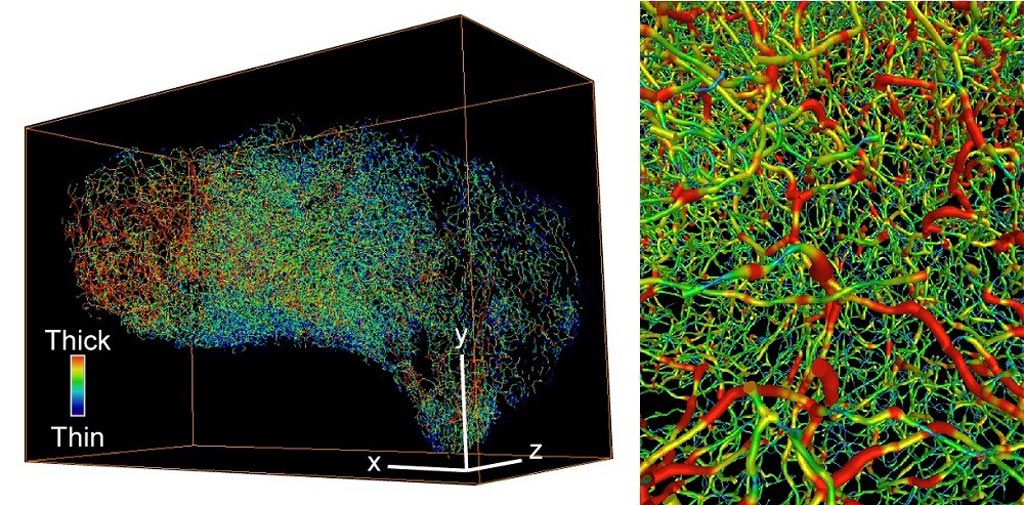New 3D App Provides More Accurate Cancer Diagnosis
By LabMedica International staff writers
Posted on 16 Oct 2017
With further development of light-sheet microscopy based 3D imaging, researchers were able to examine tumor biopsy tissue in more detail than current 2D methods, resulting in improved intratumoral heterogeneity phenotyping and diagnosis of solid tumors.Posted on 16 Oct 2017
Vast numbers of tumor tissue samples are examined by pathologists around the world, whose pronouncements inform the treatment patients are given. Mistakes can result in more suffering and sometimes death. Current pathological examination methods for assessing tumors use two-dimensional (2D) light microscopy, which can cause a major information gap in studying 3D objects.

Image: Three-dimensional images showing the complex vascular system in ovarian cancer (left) and bladder cancer (right). Thick vessels are colored red, thin vessels colored blue (Photo courtesy of Nobuyuki Tanaka / Karolinska Institutet).
“To be sure, the tumors can be divided into sections for individual study, but 3D structures such as the blood and lymph systems are very hard to study in this way,” said study lead investigator Per Uhlén, professor at Karolinska Institutet (Solna, Stockholm, Sweden). To better study human tumor tissue, the researchers applied an imaging technique, currently being used in basic research, that involves making the tissue transparent (clearing) and then reproducing it in 3D in a light-sheet microscope. For example, upon labeling with specific antibodies, certain proteins can be analyzed in more detail.
“Light-sheet microscopy has been used in basic research for a while, but it is only in recent years that it’s been refined so much that it can be used practically in hospitals,” said Prof. Uhlén, “It was an unforgettable experience to look inside a tumor from a patient for the first time.”
Working with clinicians from Karolinska University Hospital, the researchers were able to study stored samples from patients with bladder cancer and then by 3D reproduction of, amongst other structures, the blood system feeding the tumors, they could find more information about how aggressive the tumors are. The new technique also enabled more accurate diagnosis of muscle-invasive tumors, which can be missed with 2D methods.
“We’ve also studied other cancer types and judge that the method has considerable potential in the clinical diagnosis of all forms of solid tumors, especially cases that are difficult to diagnose,” said Prof. Uhlén.
The light-sheet microscope used for the study is one of only a few in Sweden and is housed at the core facility CLICK – the Center for Live Imaging of Cells at Karolinska Institutet.
The study, by Tanaka N et al, was published October 2, 2017, in the journal Nature Biomedical Engineering.
Related Links:
Karolinska Institutet














